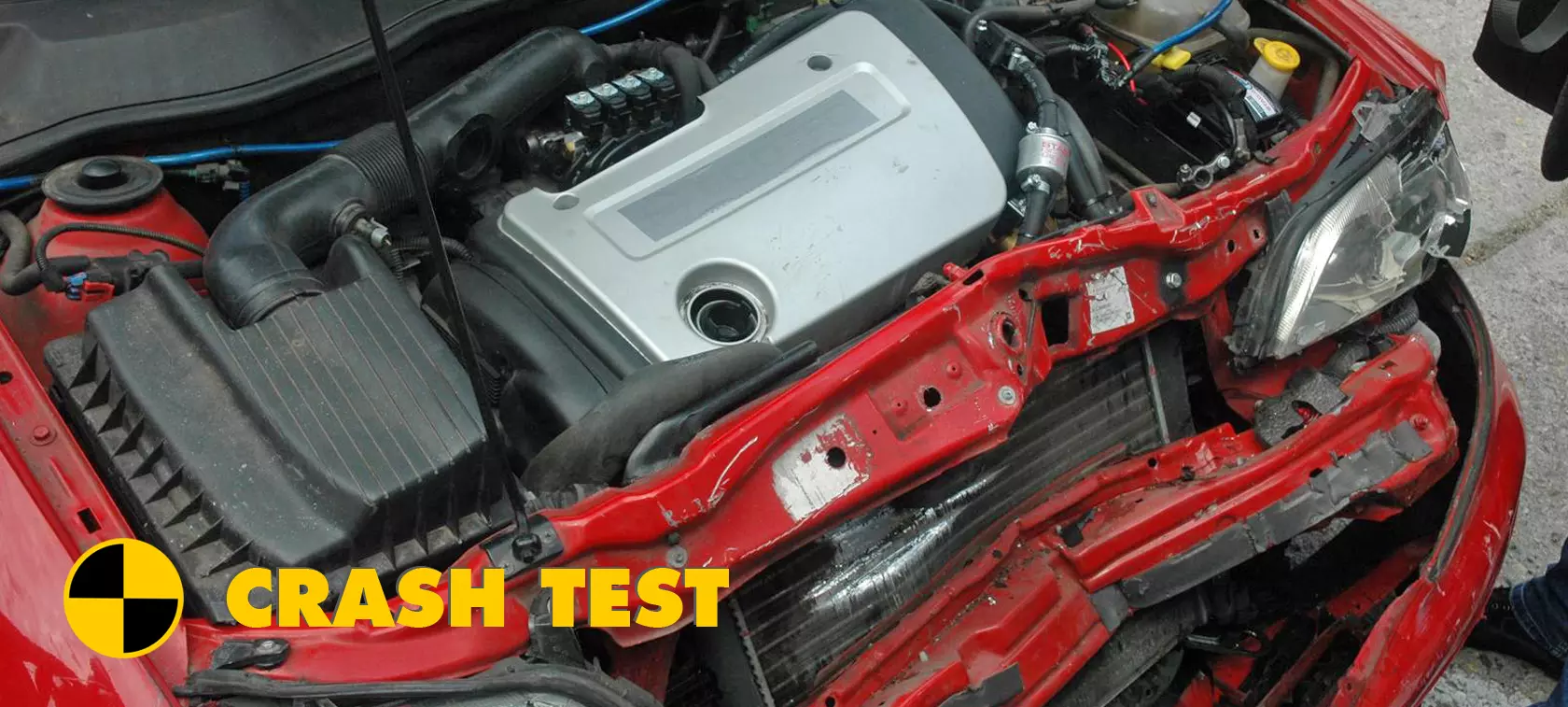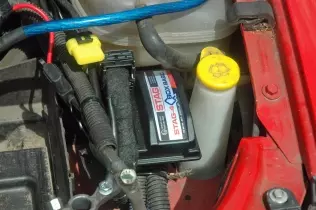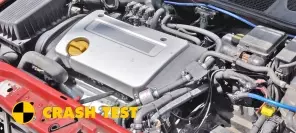- Main page
- Search
- Up to date
- Products
- Technology
- Vehicles
- Video
- Conversion Payback Simulator
Port Injection - Conversion Payback Simulator
Direct Injection - Conversion Payback Simulator
Diesel - Newsletter
Crash and the autogas system
 loading results...
loading results...
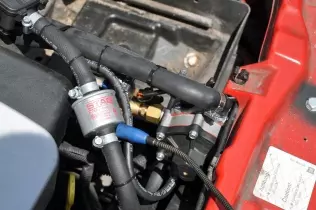 © gazeo.comThe reducer was fitted to the front part of the engine bay (see the brass adapter connecting it to the LPG electrovalve). This is of crucial importance in terms of the aftermath of the crash
© gazeo.comThe reducer was fitted to the front part of the engine bay (see the brass adapter connecting it to the LPG electrovalve). This is of crucial importance in terms of the aftermath of the crashThe excess flow valve, the safety valve and the safety fuse/fire valve are the components of the multivalve or the separate tank fittings responsible for protecting the driver and the passengers in the event of a collision, but – due to the fact that the tank and the valves are most commonly located in the rear of the vehicle – effective primarily in the case of rear-ending or fire. But what if the car hits an obstacle with its front? Have the components fitted under the bonnet been also designed to prevent dangerous outcomes of accidents, e. g. fuel leakages?
To cut a long story very short: yes, of course. And the protection is multifold, too – safety is provided by both how the components and accessories of the autogas system have been built physically (in terms of materials used) and by the functionality of the electronic control unit. And specifically? The lesser accessories, such as adapters, connectors or nozzles are made of non-scintillating materials (usually brass), so even when they scrape agains each other, they are unable to cause ignition to fuel fumes (not necessarily LPG, but also petrol) gathered under the bonnet.
LPG system ECU's on their part are designed to shut down the system immediately should the autogas pressure drop suddenly (e. g. as the result of a broken copper LPG line underneath the car, delivering fuel from the tank to the reducer). In such an event, the engine (if it keeps running at all) is switched back to petrol. It takes the ECU next to no time at all to shut down the system (once it receives the low pressure signal from the pressure and temperature sensor, which is standard on all sequential vapour state LPG injection systems), and so the risk of losing tightness in the autogas system under the bonnet (leading to LPG leakage and ignition) is next to none.
The 67 EEC UN regulation states that "a reducer/vapouriser should work in such a way
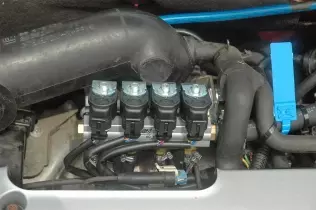 © gazeo.comThe injector rail features an anti-flow safety device of its own, but given the number of the remaining safety measures, this is just the last resort
© gazeo.comThe injector rail features an anti-flow safety device of its own, but given the number of the remaining safety measures, this is just the last resortthat it disenables LPG flow in the event of LPG pressure (as supplied to the reducer/vapouriser) dropping to or below 4500 kPa when the reducer/vapouriser is not working." In fact, modern day reducers (those used in sequential vapour state autogas injection systems) don't feature anti-leakage safety devices anymore, but the role has been taken over by injector rails and – primarily – pressure and temperature sensors located on the vapour LPG supply hose (between the reducer and the injector rail). All this means that if autogas supply (from the tank into the engine bay) is in whatever way disrupted (e. g. the copper supply line gets bent or broken), the engine won't even restart in LPG mode. Last but not least, the electrovalve located under the bonnet (usually fitted to the reducer or as close to it as possible) kicks in to cut off LPG supply when the engine (for whatever reason) is not running. No petrol fuel system offers as many safety measures as autogas systems.
In the crash-test we conducted, the autogas system fitted on the hitting car lost tightness between the LPG electrovalve in the engine bay and the reducer/vapouriser due to the breakage of a brass connector on the reducer. However, loss of tightness doesn't mean leakage here, since the ECU received a signal from the pressure and temperature sensor of sudden and abrupt pressure loss in the system and switched the engine back to petrol mode.
Zobacz stronę producenta:
STAG
